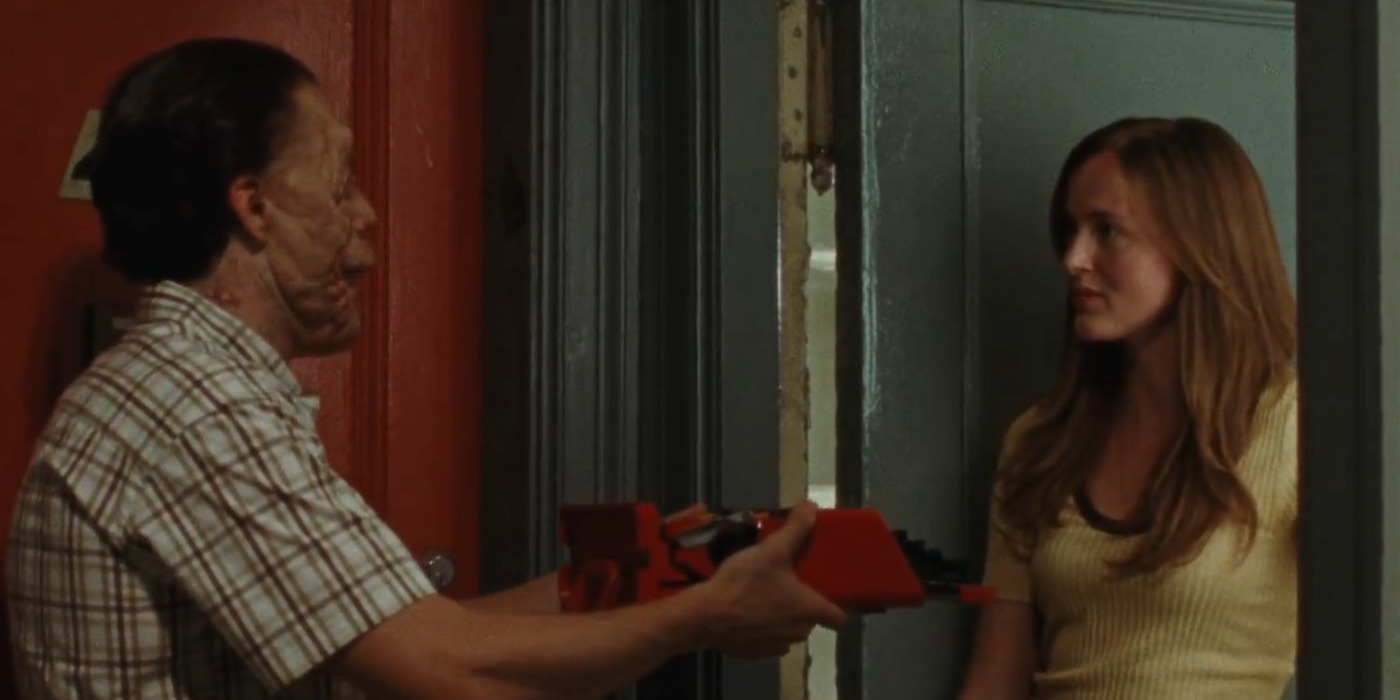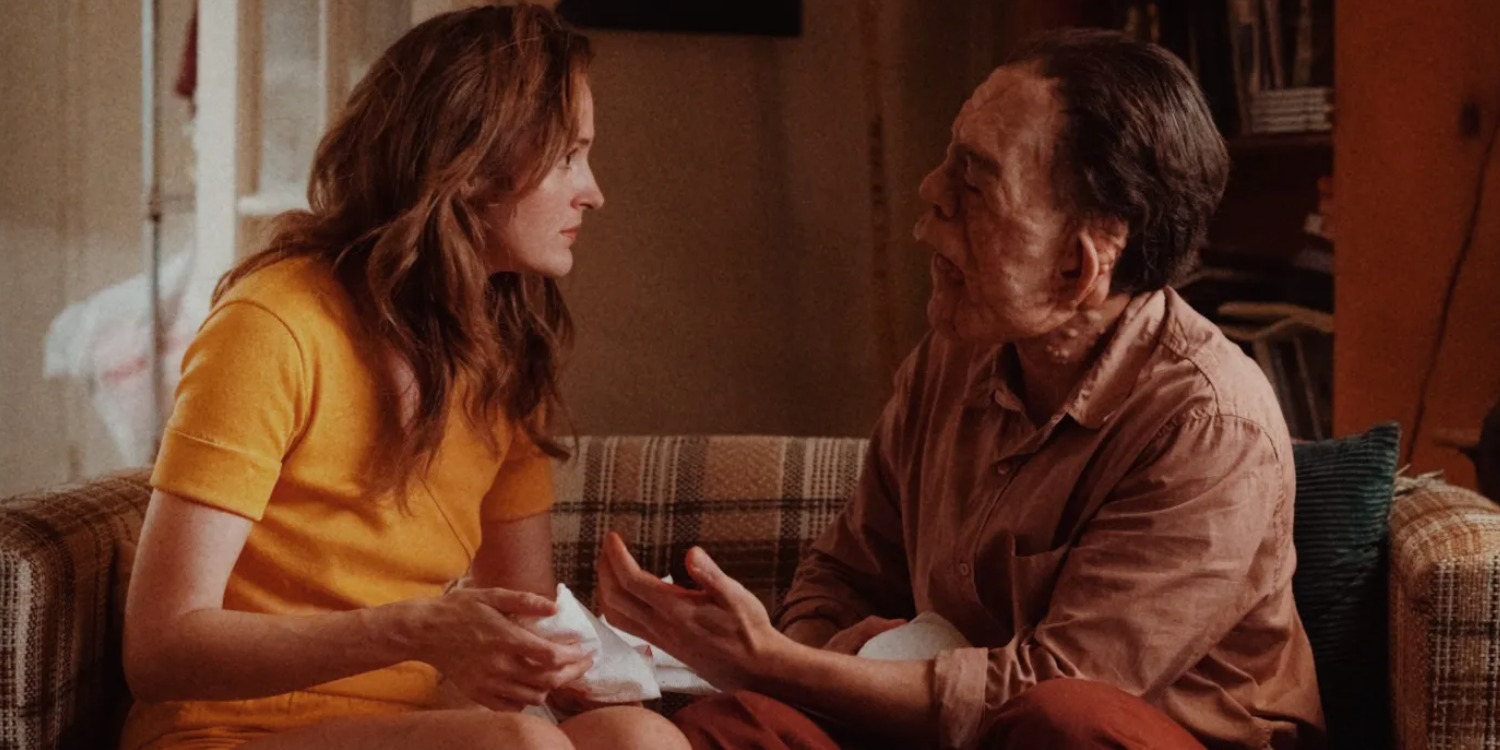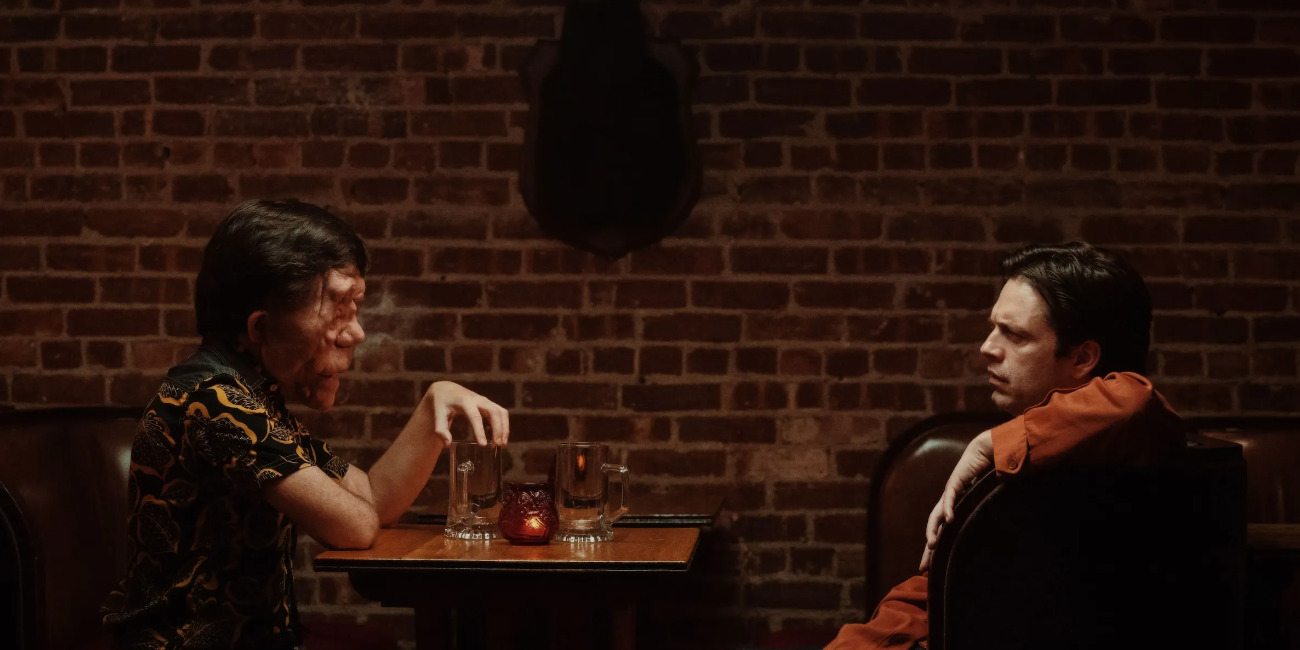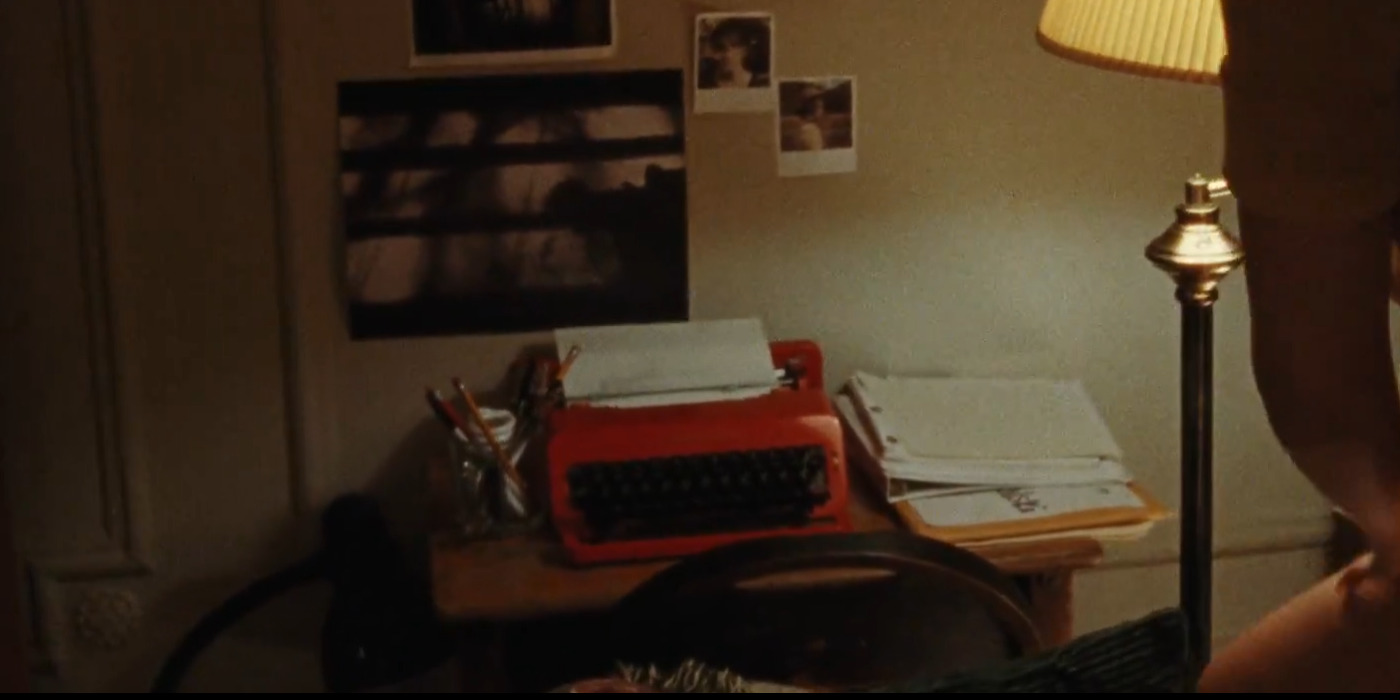Aaron Schimberg’s ‘A Different Man‘ follows the life of an aspiring actor, Edward Lemuel, particularly after he undergoes a transformational surgery. Edward has neurofibromatosis, a rare genetic disease that results in facial disfigurement. However, that changes when he becomes the subject of an experimental medical procedure. As a result, the man abandons his old life and brandishes himself as Guy Moratz, a new man, to match his new identity. However, eventually, his path crosses with Ingrid—his old neighbor—who has written up a play about Edward’s life. Consequently, as Oswald enters the picture and Edward loses out on the role he was arguably born to play, the latter is sent into a spiral he can’t get out of.
Throughout the narrative, the film sports many mysteries—most involving the characters and their motives. However, one point of intrigue unfolds consistently in the background through a red typewriter that frequently changes hand over time. SPOILERS AHEAD!
The Red Typewriter: Edward’s Gift to Ingrid
The red typewriter begins its journey in Edward’s apartment. The man has written poetry on it, seemingly discussing his relationship with people’s visual perception of him. Yet, he shirks away from the title of a writer, preferring to treat it as an activity he simply dabbles in sometimes. As such, it seems like he wants to distance himself from the art form when he impulsively decides to pass the typewriter onto Ingrid, his new neighbor and tentative friend, as a thank-you for getting his door painted. Notably, Ingrid chooses a bright red color for the task, showcasing she has formed a subconscious association between Edward and the typewriter. Perhaps the same plays into Edward’s decision to give the typewriter to Ingrid.

Ingrid is an aspiring playwright and often jokes about writing a part for Edward. Therefore, by handing over the red typewriter to her, the actor could be hoping to remain on the playwright’s mind as a friend and even more. On the other hand, Ingrid’s initial reaction to receiving the typewriter is the assumption it must have been an heirloom passed down from Edward’s mother. This showcases how the woman has—unknowingly or otherwise—started seeing Edward’s life as a story that would benefit from narrative threads even where there aren’t any. Thus, in a way, the red typewriter becomes a tool that subtly highlights Edward and Ingrid’s perceptions and feelings toward one another.
The Red Typewriter: A Gift That Keeps Giving
While the red typewriter’s narrative purpose plays out quite simply in the story’s first half, its meaning drastically changes in its following appearance. Once the surgery successfully transforms Edward’s face, he lies about his own death by suicide to pursue a new life as Guy Moratz. Yet, shortly after, he finds himself returning to that life—still under the mask of his new identity—after he learns about Ingrid’s play. The play is titled Edward and is evidently based on Ingrid’s relationship with the man. Nonetheless, as the real Edward auditions for the role, he can’t outright reveal his connection to the story. This creates natural frustration.

On her part, Ingrid remains unwilling to reveal the biographical nature of the play and simply treats it as a creation of her mind. Considering it’s based on her perception of the real man, the same isn’t entirely false. Nevertheless, Edward begins to realize the scope of the disconnect between Ingrid’s creativity and the real man behind her story once he visits her apartment. Ingrid still holds onto the red typewriter. Nonetheless, she doesn’t even remember the last time she wrote on it—which might as well have been when she typed out a note for Edward.
In the present time, Edward is perhaps hoping that Ingrid wrote her play out on the typewriter to preserve some sentimentality between the real Edward and her work. Nonetheless, Ingrid truly has only used her relationship with the man as an impetus to fuel her creativity without retaining any strong emotional ties to him. For the same reason, she easily offers for the new Edward—Guy Moratz—to take the typewriter home with him if he wants. Eventually, she manages to rid herself of the typewriter by passing it on to Oswald, who similarly offers one of his guests to take it with them if they so wish.

Essentially, the red typewriter has initiated a game of hot pocket, with each new player appreciating it for its eccentricity without being interested in actually putting it to use. Thus, what had begun as an earnest gift extended in hopes of forging a connection becomes a party trick, hailing from a long line of former owners. Interestingly enough, Edward—the self-proclaimed non-writer—is the only one who visibly uses the red typewriter to channel his art throughout the story.
Read More: A Different Man Ending, Explained


You must be logged in to post a comment.